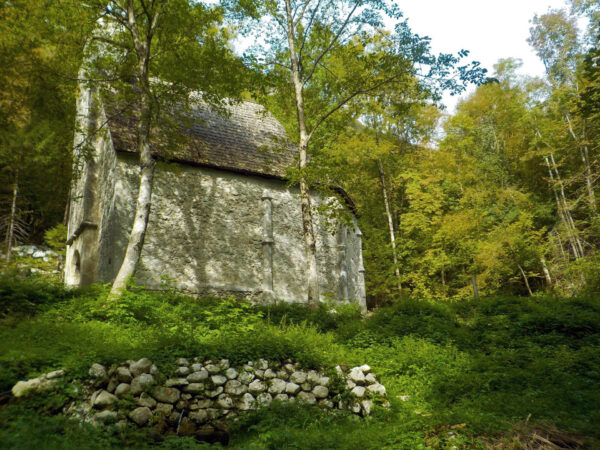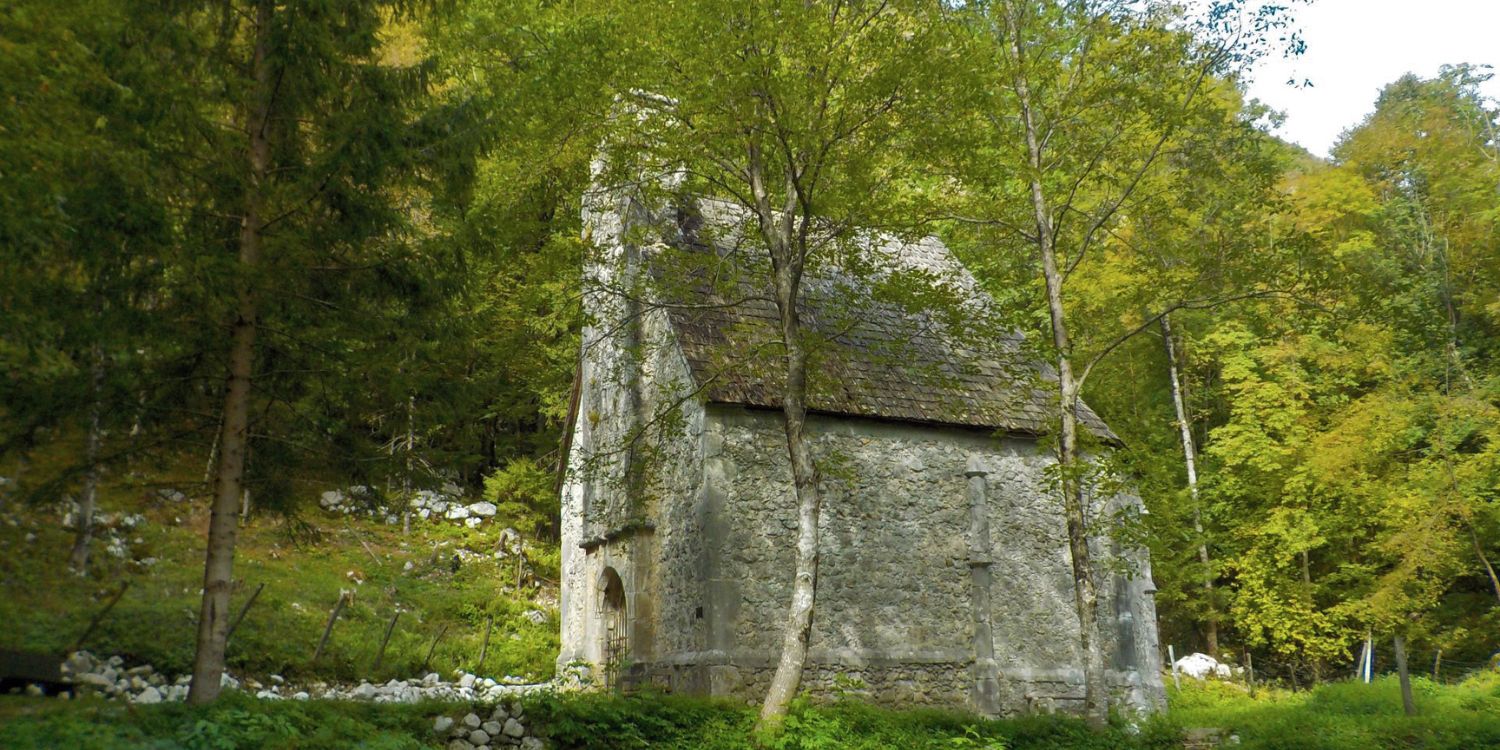
12 Feb Top 5 Things to See in St Leonard Church, Bovec
Yes, we too have our little Sleeping Beauty. In the middle of the magical forest not far from Bovec stands a small Gothic church with unusual and mysterious story.

THE STORY OF ST LEONARD
The church is dedicated to St Leonard, locally known as St Lenart. An unusual legend was knitted from his life story.
St Leonard was born in the 5th century in France. It was a turbulent time when Europe was facing the collapse of the Roman Empire and the bloody attacks of Attila and his hordes. But also a time of a fairy tale world of King Arthur and the time when people started to celebrate Christmas.
The Frankish dynasty of Merovingians rose from this medieval chaos in France. And a young nobleman Leonard was growing up on the court of the most famous of all the Merovingian kings Clovis I. His father was a high-ranking officer in the army of the king. Leonard was raised a knight and when he grew up, he became the king’s advisor. It was a start of a great career, but fate had other plans for this young man.
Bishop Remigius was a regular visitor at the court as the wife of King Clovis was deeply religious Christian. However, king Clovis and most of his people still worshiped pagan gods. Queen Clothilde regularly tried to persuade her royal husband to convert, but king ignored her.
Then, he found himself in desperate position in a war with the Alemanni. It seemed that the war was lost when king Clovis promised to his wife he will accept the Christian faith, if her God helps him win. Of course, his promise was rewarded by a smooth victory and the king had no other option than to change his religion.
LEONARD’S BAPTISM
On the Christmas day in 498 AD a ceremonial baptism took place on the royal palace. King Clovis and majority of nobles were baptized, including our Leonard.
This act led to the raise of Catholic Church in the lands of the first Frankish kingdom. Young Leonard decided he no longer wanted to be a nobleman and knight. He followed God’s call to become a priest. He was soon appointed bishop, but he chose a hermit life and retreated in a remote forest.
But Leonard’s legend was not over yet. The dark age of early medieval was the time of big wars and invasions of foreign armies. Europe was flooded with crowds of refugees. Many innocent people ended in captivity and in the time of the dark Middle Ages it meant certain death.
Leonard felt sorry for those poor souls and asked king Clovis for their freedom. Then, he offered them work in his forests. Soon a small village and nice cultivated fields grew by the forest.
When Leonard died in 559 AD the freed prisoners hang their prison chains to his grave as a sign of gratitude. All over Europe many churches dedicated to St. Leonard were built. And, they all had a chain.
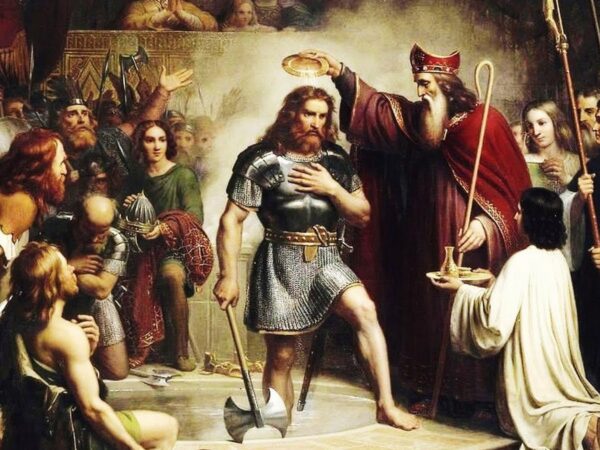
TURKISH RAIDS
900 years later Europe got rid of the dark Middle Ages. In the golden age of the Renaissance the brilliant mind of Leonardo da Vinci and Christopher Columbus’s discovery of America shaped the new image of the World.
But in the meantime the history of Europe also wrote a dark chapter of Turkish invasions. And, right in the middle of this dark chapter the land of Slovenia was also mentioned.
The cruel Turkish army didn’t just devastate villages and kill all the rebellious peasants. They also had this nasty habit of kidnapping people and selling them into slavery.
In 1478 Turks crossed the Soča River and sacked the rich province of Friuli, Italy. Turkish army of 15,000 horsemen overwhelmed Bovec, but for some reason they didn’t wreck it. Well, to be honest locals were so poor they didn’t have much to take anyway.
However, invaders moved towards the Kluže Fortress where small squad of soldiers from Venetian Republic awaited them. The story of the clash at the fortress Kluže is still alive in local folklore. The defenders damaged a wooden bridge over the gorge of the river Koritnica and the Turkish horsemen fell into 70m deep abyss.
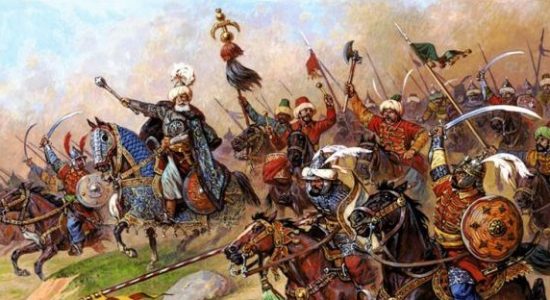
GOTHIC CHURCH IN THE FOREST
In the meantime locals were hiding in forests and caves. One of those safe harbors was in the forest between Bovec and fortress Kluže. It is here where now the Gothic church of St. Leonard stands as a peaceful reminder of those cruel days. That’s why it is a bit away from the road.
The construction of the church is still shrouded in mystery, and to this day remains a big riddle. We do not know who and when exactly built it. We only know that it was build of local stone and it originally had a chain.
Masses were then performed in the church regularly until 1781. Then, the Austrian Emperor Joseph II. ordered to close all small churches. There were too many and they were too expensive to maintain. St Leonard was left to decay.
Although similar fate befell several smaller churches near Bovec, st Leonard is surprisingly well-preserved. The church had a much better construction than others. And, due to its remoteness the locals did not use its perfectly carved stones for the construction of their houses.
The church is undoubtedly one of the most beautiful in the Upper Soča Valley and is worth the visit. And, Leonard the saint who saved Bovec from the Turks, has his place on the ceiling fresco in the church of St Ulrich in Bovec. Six saints are painted on that fresco – each representing one of the churches in the area. You will easily find St Leonard. He’s holding a chain in his lap.
TOP 5 THINGS TO SEE
1. BELL TOWER
Above the entrance to this little sanctuary raises a modest bell tower. It has a niche with a magic bell. Before entering the church here’s what you should do:
- take a moment to collect your thoughts
- grab a wire that hangs from the bell tower
- close your eyes
- make a wish
- ring the bell and voila! Your wish will come true. Just make sure you don’t tell your wish to anyone!
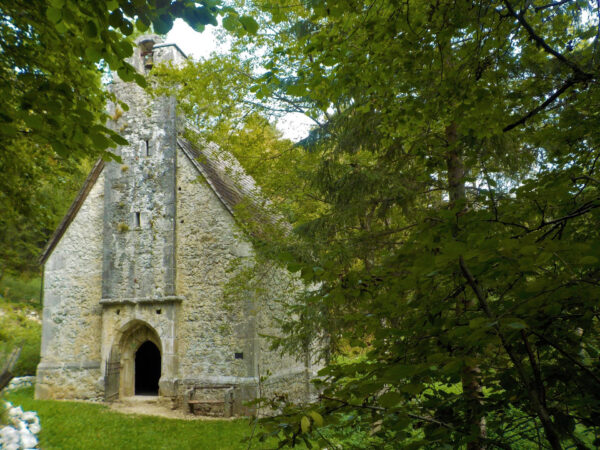
2. GOTHIC PORTAL WITH POINTED ARCH
The small and narrow entrance to this little shrine decorates a portal with pointed arch. This delicate stone work proves that the church was built by true masters.
It is interesting that the church was built in the Gothic style when Renaissance was at its peak in the nearby Italy. But Renaissance architecture in Slovenia is more exception that the rule. After the war with Venetians, the Soča valley was connected to the Habsburg monarchy. And, Austrians were not too enthusiastic about Italian architecture. Therefore, in the Austrian provinces, with rare exceptions, Gothic architecture was preserved up until Baroque.
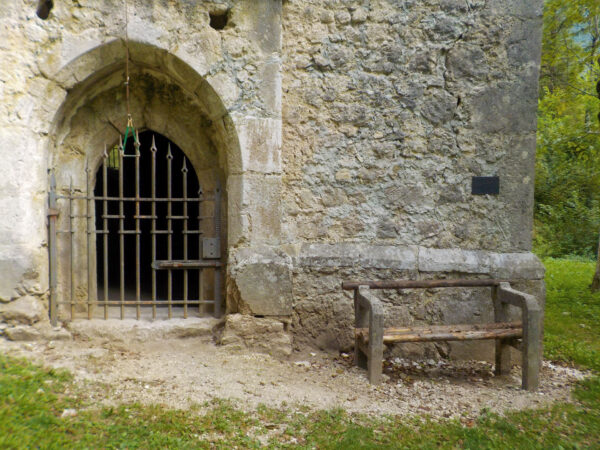
3. LAYOUT OF THE NAVE
St Leonard is a simple one-nave church. Quite unusually, however, its nave is wider than longer. No one knows why.
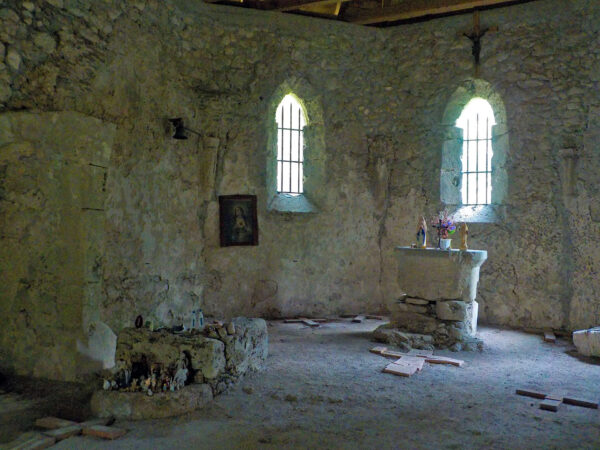
4. REMAINS OF THE ALTAR AND THE PRESBYTERY
Inside the church you can still see the remains of the stone presbytery (part of the church where the altar is located) and the remains of the altar.
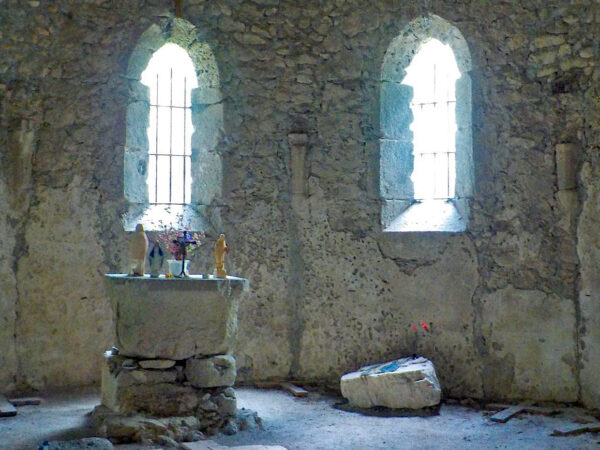
5. SOURCE OF SPRING WATER IN THE FOREST BY THE CHURCH
Yes, you can drink the water. So take a bottle with you and enjoy a sip of fresh water. Do not worry about spending the rest of your day on the toilet. We tested it and none of us suffered any consequences.
